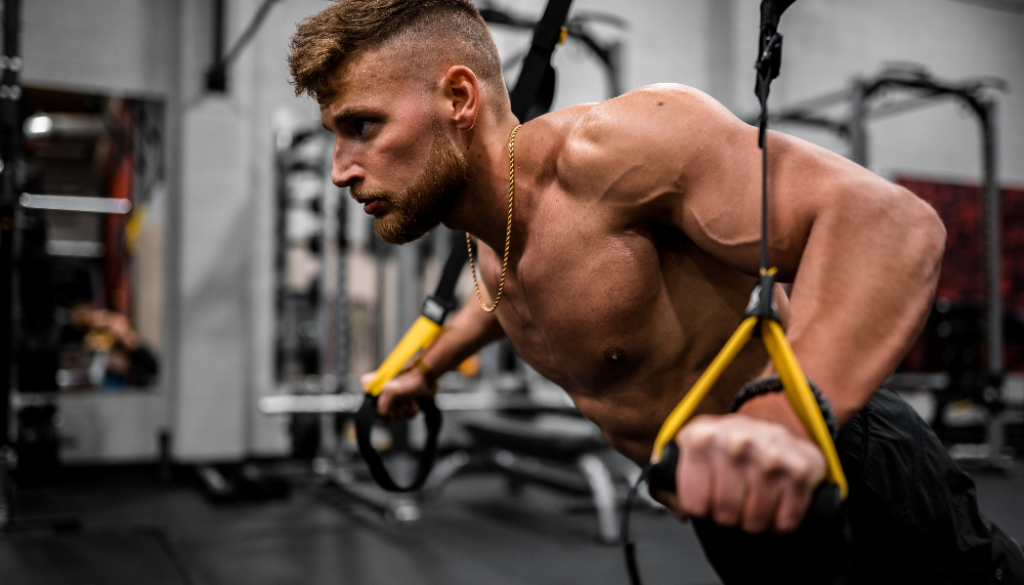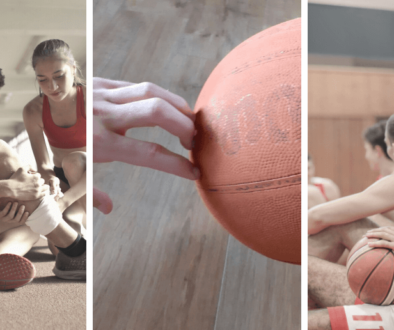Is Bench Press Worthwhile for Basketball?
Recently I had a coach ask me for some advice on their shoulder. They felt that the arm bone was coming forward in the joint when doing the bench press. This is not an uncommon problem when it comes to bench press. While there are many reasons for this to occur, one of the most common reason is poor shoulder mobility. This can be common in ballers as they tend to be strong and powerful yet lacking in mobility. Sure enough, poor mobility was the problem in this instance too.
So this got me thinking about how useful the bench press is for ballers. Here are my musings on the topic, along with some around shoulder mobility too.
Bench Press and the Combine
The bench press is one of the most commonly used strength exercises for pushing. It has also been a regular feature of the NBA combine. This is likely due to the fact that it is a good test of strength and strength endurance for the upper body. Although it has been regularly used, I wouldn’t be surprised if there was a poor correlation to the best performers of the bench press in the combine compared to the stars of the NBA. I mean…the best ever performance in the combine was by Jason Keep?!
Bench press remains a staple in the combine and I imagine that is because it is a simple test that does a job. However, is it an effective exercise for ballers to utilise in their training programmes? In my opinion, the bench press is not the most effective strengthening tool for basketballers. I wouldn’t chuck it out completely but I also wouldn’t overly rely on it.
Bench Press and Ballers don’t always mix
Basketball players tend to have longer arms than the average athlete (not in my case though). Longer arms mean the bar has to travel further. Which in turn, means more work, making the bench press a tougher lift for ballers. Making it a less efficient exercise for some and demoralising to boot. Is that a good payoff?
In addition, basketball does not have a lot of activities where you need to be strong in the same position/movement as the barbell press. The barbell bench press utilises an internal rotation of shoulders, causing the elbows to flare out during the pressing motion. Even if you look at passing the ball, the elbows do not often tend to flare that much. Is there the carryover?
On top of this, too much bench press too often can cause an inefficient posture for basketball. It could lead to rounded shoulders and tightness in the chest. Especially if there is not a proper ratio of pulling exercises (rows) to pushing exercises (bench press). Add in a poor mobility programme and the athlete’s shoulders will tend to be pulled forward even more. That is an inefficient posture for anyone who wants to become a sharp-shooter.
How to utilise Bench Press best
As already mentioned, you don’t have to chuck it out completely. But use it wisely and get a well written S&C programme. Remember the following:
- Is your build suited to barbell benching
- Balance pushing and pulling exercises
- Utilise a good mobility programme
- Find alternatives to add variety to your sessions
- Remember to grade up to minimise injury risk
Alternatives to Barbell Bench Press
There are alternatives to the barbell bench press that may have more carryover to basketball. Utilising exercises that reduce the ‘flare’ of the elbows may be the better option. Especially if you are experiencing a similar issue to the coach I mentioned at the beginning. If you are experiencing pain and discomfort, changing your grip to neutral grip exercises is a good option to modify or unload.
Barbell bench press alternatives
- Dumbbell press with a neutral grip (single arm for an extra challenge)
- Dumbell Arnold Press
- CHEK press
- Landmine press (single arm)
- Pushups/ TRX pushups
- Med Ball/ Slam Ball wall chest pass
- Banded Pallof Press
Improving Shoulder Mobility
If, like the aforementioned coach you are having shoulder mobility issues. It is worth focussing on improving your mobility and adding it to your routine. After all, good shoulder mobility is required for passing, catching, ball handling, rebounding and shooting. Even more so, if you aspire to tomahawk dunk.
The shoulder is a complex joint that needs multidirectional mobility, stability and strength. As always, exercise selection will vary from person to person. One reason is that each person has slightly different anatomy. Resulting in each individual having a different capacity for each exercise. Therefore, getting a tailored programme for your needs and capacity is highly recommended.
However, If you are looking for mobility routines then the GMB Shoulder Pain Routine and Ido Portals Scapula Mobilisation Routine are 2 of my favourites.
When building mobility routines, I often recommend exercises that work on mobility and strength. Some exercises I regularly go to:
- Dumbbell Cuban Rotations
- Quadruped Shoulder CARs
- Prone External Rotation Lift overs
- Prone, T, Y, I lifts
- Thoracic Mobility Exercises
- Yoga
Final Notes
Just remember, strength and mobility will not change overnight. It can take weeks to months to gain improvement and lasting adaptations. Mobility work can be provocative to start with so start steady and gradually build.
As always, this resource should not replace diagnosis and management from a medical professional. Always check before you follow the guidance. I recommend speaking with your therapist or dropping us a message when structuring your plan. There are a number of variables that aren’t covered in this article and you may need support when fine-tuning your plan




